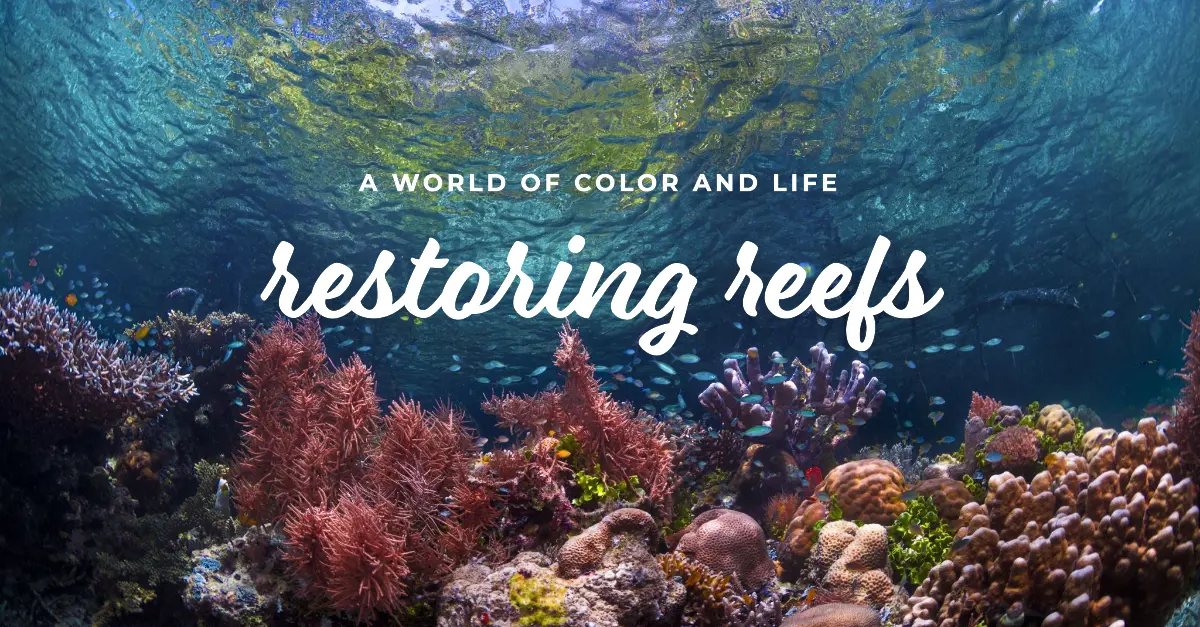Restoring Reefs: Can Coral Gyms Save Our Reefs?
Coral reefs are some of the most ecologically and economically valuable ecosystems on our planet. Covering less than 0.1 per cent of the world’s ocean, they support over 25 per cent of marine biodiversity and serve up to a billion people with a wide range of ecosystem services such as coastal protection, fisheries production, sources of medicine, recreational benefits, and tourism revenues.
The Coral Crisis
Coral reefs are more than just stunning underwater landscapes; they’re the rainforests of the sea, supporting a quarter of all marine life. But these intricate ecosystems are facing an existential threat: Coral Bleaching. When water temperatures rise beyond their tolerance, corals expel colorful algae living within them, essentially losing their “food source” and turning white. This doesn’t mean they’re instantly doomed, but prolonged bleaching significantly increases their mortality rate.
The culprit? Primarily, climate change. As global temperatures creep upwards, so do ocean temperatures, pushing reefs closer to their bleaching thresholds. The consequences are dire: reduced biodiversity, weakened coastlines, and disrupted fisheries, impacting both marine life and human communities.
They are on the frontline of the climate crisis due to their sensitivity to warming seas. As much as 50 per cent of our coral reefs have already been lost. According to recent reports by the Intergovernmental Panel on Climate Change (IPCC), up to 90 per cent of reef-building corals could be lost by 2050, even if warming is limited to an increase of 1.5°C.
Enter the Coral Gym: Building Resilience Through Science
Faced with this grim reality, scientists are exploring creative solutions like coral nurseries and assisted evolution. But the “coral gym” concept takes things a step further. Imagine rows of coral fragments, not lifting weights, but exposed to controlled stressors like warmer water, increased acidity, and even simulated storms. By gradually ramping up these challenges, researchers aim to induce a stress response that strengthens the coral’s cellular mechanisms and immune system. Think of it as building resilience through controlled workouts.
This approach leverages a fascinating phenomenon called hormetic hormesis. Just like small doses of toxins can actually strengthen our bodies, mild stressors can enhance a coral’s ability to cope with future hardships. By mimicking the environmental pressures they’ll inevitably face, scientists hope to equip corals with the tools they need to survive in a changing world.

Coral Gyms: A Glimmer of Hope, But Not a Magic Bullet
While coral gyms hold immense promise, it’s crucial to remember they’re not a one-size-fits-all solution. Different coral species have varying vulnerabilities, and scaling up this process for large-scale reef restoration presents logistical challenges. Moreover, addressing the root cause – climate change – remains paramount. Reducing greenhouse gas emissions is the ultimate path to safeguarding these underwater wonders.
But coral gyms offer a crucial piece of the puzzle. They provide a platform for testing interventions, understanding coral adaptability, and developing targeted strategies for specific reef ecosystems. They’re a testament to human ingenuity and our unwavering commitment to protecting the planet’s irreplaceable treasures.
The Future of Our Coral Reefs: A Collective Responsibility to Restoring Reefs
The fight to save coral reefs is far from over. While coral gyms offer a ray of hope, they necessitate continued research, funding, and collaborative efforts. As individuals, we can be part of the solution by reducing our carbon footprint, supporting sustainable seafood practices, and spreading awareness about the threats coral reefs face. Remember, the ocean’s health is intricately linked to our own. By protecting these underwater havens, we safeguard not just marine life, but the very fabric of our planet’s delicate balance. So, let’s join hands and ensure that the vibrant hues of coral reefs remain a permanent fixture in our world, not a bleached memory of the past.
Also Read: Earth, Our Weary Garden: Can Regenerative Agriculture be the healing method to Save the Soil?
